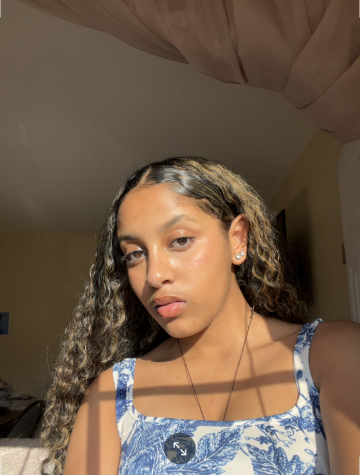The Pocket Problem
September 21, 2022
As a typical girl, dressing up is an important part of my life. Being the busy gal I am, I always have things in my hand, but almost every time I reach down to put something into my pocket I am faced with the reality that, for most women’s clothing, pockets just don’t exist. This fills me with a rage like nothing else does. Reaching down and realizing that the pocket has been sewn shut or even worse, is not there at all is frustrating on so many levels! Purses are great and all, but I have to wonder why women’s clothing rarely has a feature as essential as a pocket?
Though it may seem like a random observation, I am not the only person who has noticed this. Many others express their frustration about the lack of pockets in women’s clothing. “It is so annoying to have all my things in my hand because I don’t want to wear a purse,” says PB junior Lydia Timbo. “I don’t want to bring a bag with me everywhere I go, and that shouldn’t be necessary either!” they exclaim. Another PB Junior, Maha Ali also mentions how this issue has affected the way she shops. “All of my jeans are mens at this point, it’s all I wear” she tells us.
In order to really look at this, we need to take a deeper dive into the ideals of the past. In the mid-to-late 19th century, trousers were seen as a token in the women’s rights movement. This nod to women’s rights led to pants that were used “for both practical and political purposes” according to Charlotte Ann of Britannica.
Pockets were originally sewn onto pants to hold valuable objects such as watches. In fact, for Levis the goal was to give men somewhere to hold their pocket watches. Ultimately, the lack of pockets on women’s clothes could be due to the fact that not only weren’t they meant to wear pants in the first place, but also that they weren’t expected to even be owners of valuable objects such as watches.
Some might think that women should just invest in pants that have pockets instead of expecting all of our clothes to have them. Well, it’s not that simple. In fact, it is a much deeper issue as even the pockets that do exist in women’s clothes fall short. An analysis done by the publication The Pudding showed that the pockets in women’s jeans are 48% shorter and 6.5% narrower than men’s pockets. This indicates that even when women’s jeans include pockets, they are significantly smaller than the one’s on men’s clothing. The size makes them barely usable.
So, why not sew bigger pockets? It is a simple thing that should be no trouble at all. Yet what would be stopping designers and clothing companies from adding them? Where are women expected to keep their everyday belongings…oh wait, purses. Bags have been a staple fashion item for women for a very long time. I mean, Kylie Jenner’s tour of her closet of designer handbags has a whopping 18 million views on Youtube. In a study done by Grand View Research, the handbag market size was valued at 49.12 billion US dollars in 2021. Safe to say that the purse industry probably doesn’t hate the lack of pockets in women’s clothes.
A lot of clothing companies also create handbags and sell these alongside their clothing and other items. One of the most popular jean manufacturers in the country, Levis, sells handbags, tote bags, denim purses, backpacks, and more. These realizations bring to the table the possibility that the lack of pockets in women’s pants aren’t an accident. Seriously, could these huge brands sew smaller pockets on women’s clothing for the purpose of boosting profits in their handbag department?
It is clear to see that the lack of pockets on women’s clothing is not a mistake. Ladies, if you are willing, I encourage you to stop buying an excessive amount of handbags and funding these businesses that are quite literally profiting off of our inequities. Now, it certainly seems that it is time to move on from this sexist past full of traditional and outdated norms, and unprincipled marketing strategies. It is time to move into a future where women’s clothes have the same level of functionality as men’s clothes.












































